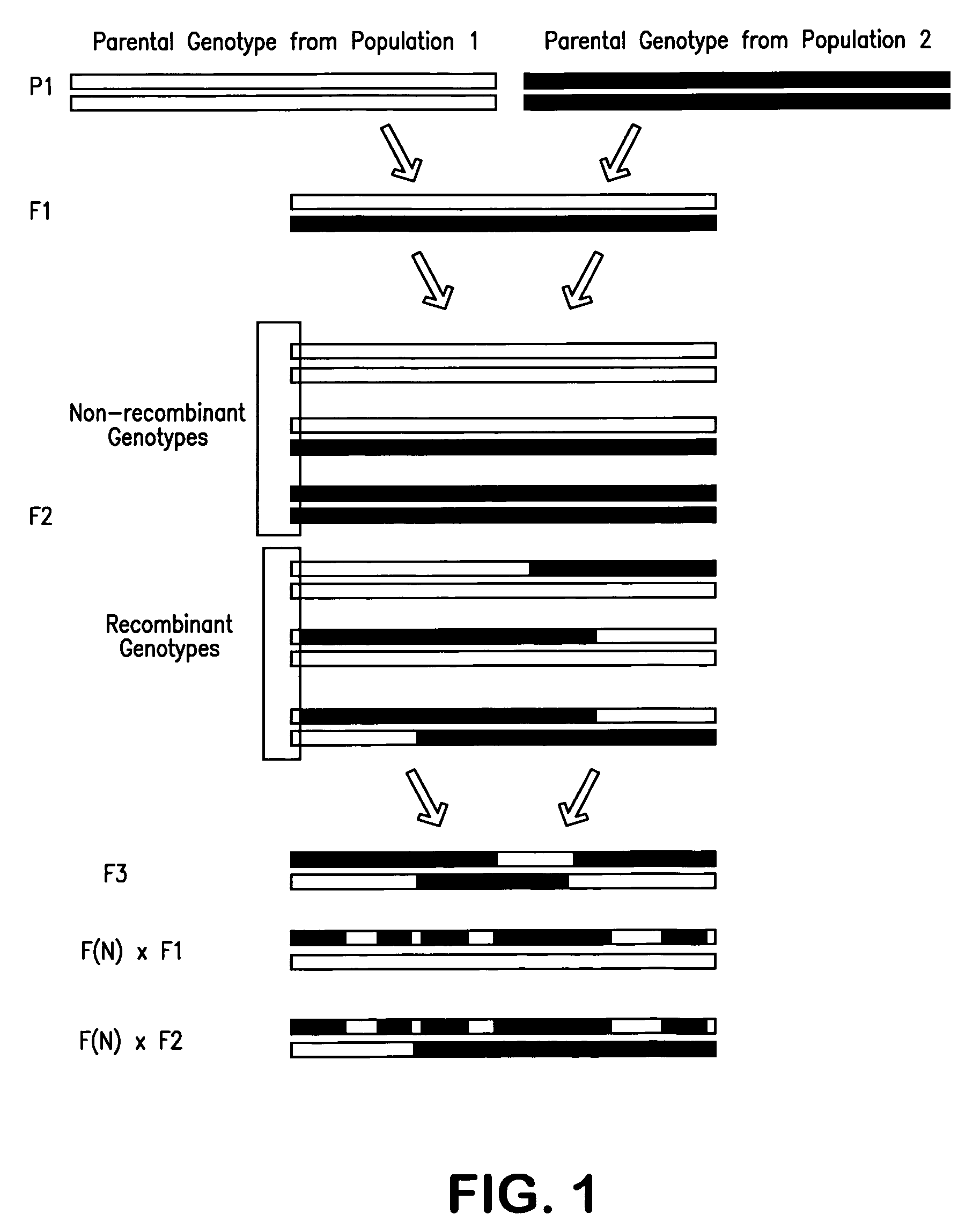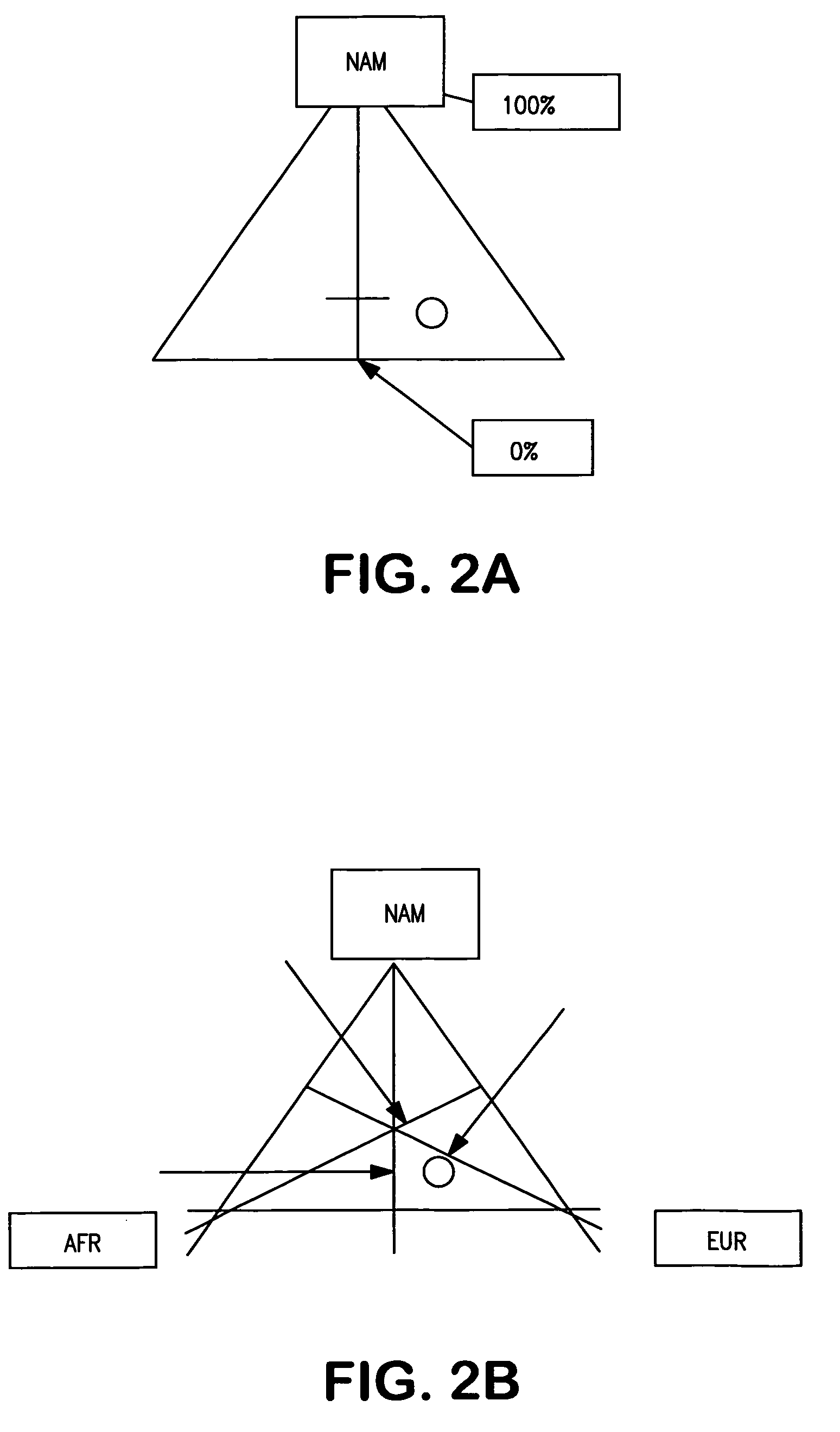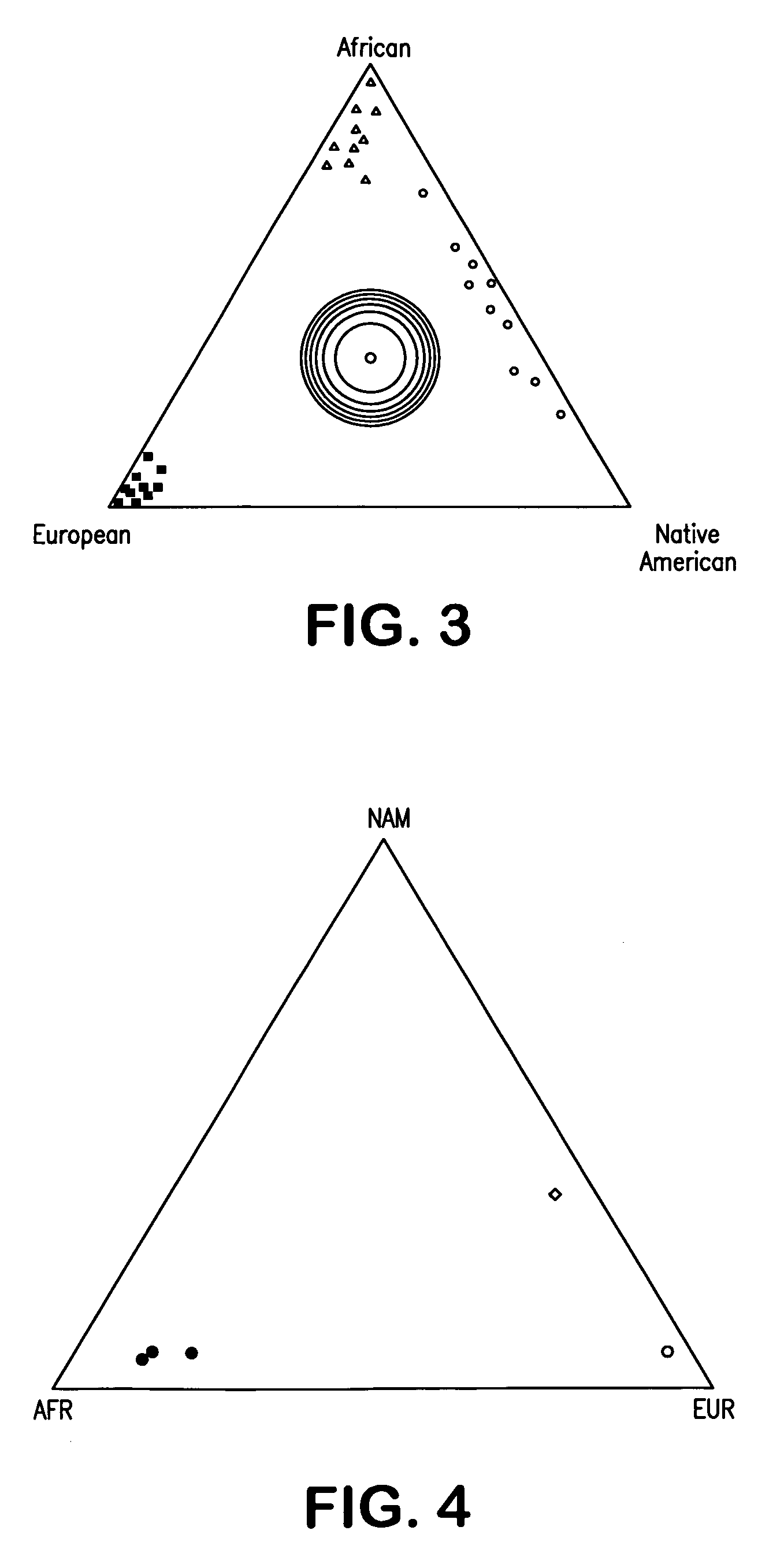Multiplex assays for inferring ancestry
a multi-assay, ancestry technology, applied in the field of indoeuropean ancestry identification of genetic markers predictive of biogeographical ancestry, can solve the problems of difficult consistency, difficult classification of individuals into a single group, unsatisfactory subjective methods used to measure population affiliation, etc., to achieve greater levels of indoeuropean ancestry and lighter skin ton
- Summary
- Abstract
- Description
- Claims
- Application Information
AI Technical Summary
Benefits of technology
Problems solved by technology
Method used
Image
Examples
example 1
Determination of Biogeographical Ancestry Using Ancestry Informative Markers
[0259] This Example demonstrates that a panel of 32 Ancestry Informative Markers (AIMs) allows an estimate of the genetic contribution from populations of African, European and Native American ancestry.
[0260] The AIMs used in the exemplified study include single nucleotide polymorphisms (SNPs), deletion / insertion polymorphisms (DIPs) and Alu sequences (see Example 2 for identification of AIMs). Markers showing differences between the parental populations greater than 30% were selected (Table 1; see, also, SEQ ID NOS:332-363). Informative genetic markers were identified by testing each candidate marker in a panel of European (Spanish, and German), African (from Nigeria, Sierra Leone, and Central African Republic), and Native American populations (Mayan and South Western Native Americans) to confirm the usefulness of the marker for admixture estimation.
TABLE 1Ancestry Informative Marker PanelMARKERLOCATION...
example 2
Four Way Admixture Estimate of Ancestry
[0299] This example demonstrates that a four way admixture BGA test provides the same results obtained using three 3 way BGA tests.
[0300] As indicated above, BioGeographical Ancestry (BGA) is the heritable component of race. Because socio-cultural and geo-political metrics for measuring human race are human, not natural, constructs, their use in genetics research makes it difficult to control for population genetic structure, and may obscure important correlations between BGA and human biology. This example provides methods and compositions to accurately measure genetic structure within individuals. The human genome was mined for candidate Ancestry Informative Markers (AIMs), which were validated on an ultra-high throughput genotyping platform and used to establish parental population allele frequencies. Using 71 of the most informative AIMs (Table 6), which cover most of the chromosomes, and coalescing the human population to four main conti...
example 3
Application of the BGA Test to Genealogy
[0336] This Example demonstrates that BGA admixture estimates can be integrated with genealogical information obtained using traditional genealogical research methods.
[0337] Genealogists collect data that largely is relevant in a geopolitical context (e.g., data relating to which countries a person's ancestors are from, what their religions were, and their last names) rather than in an anthropological context (e.g., what type of population admixture characterizes the person's family tree). There are two main sources for obtaining minority admixture in one's results: 1) recent exogamous admixture events; and 2) ancient affiliations with ethnic groups that are characterized by systematic admixture.
[0338] The results of an exogamous event is determined in a recent genealogical time (e.g., the last 250 years). For example, as shown in FIG. 11, a Chinese great grandparent in an otherwise homogeneous IndoEuropean family tree would produce a grand...
PUM
| Property | Measurement | Unit |
|---|---|---|
| Current | aaaaa | aaaaa |
| Volume | aaaaa | aaaaa |
| Molar density | aaaaa | aaaaa |
Abstract
Description
Claims
Application Information
 Login to View More
Login to View More - R&D
- Intellectual Property
- Life Sciences
- Materials
- Tech Scout
- Unparalleled Data Quality
- Higher Quality Content
- 60% Fewer Hallucinations
Browse by: Latest US Patents, China's latest patents, Technical Efficacy Thesaurus, Application Domain, Technology Topic, Popular Technical Reports.
© 2025 PatSnap. All rights reserved.Legal|Privacy policy|Modern Slavery Act Transparency Statement|Sitemap|About US| Contact US: help@patsnap.com



